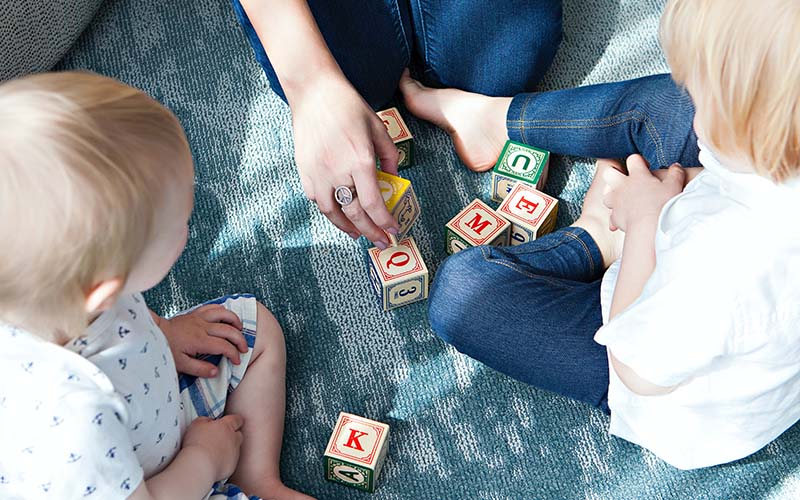There are many people who are experiencing or who have experienced the effects of poverty in our local communities.
In fact, a recent study shows that 744,000 Victorians currently live in poverty, making up 13.3% of Victoria’s population¹.
This week (17-23 October) marks Anti-Poverty Week – an opportunity for us to educate others and find ways of reducing poverty in our communities at large.
So what is the definition of poverty, who experiences it, and what is its impact on our community?

Poverty in Victoria
The Victorian Council of Social Service (VCOSS) defines poverty as not having enough available income to afford life’s necessities¹.
This means that anyone, anywhere, can experience poverty.
Families with children, individuals, couples and seniors are all impacted by poverty, experiencing the inability to afford essentials such as food, access to healthcare, retain long-term housing, and purchase necessary household items and clothing.
A perhaps unexpected statistic is that a majority of people living in poverty (51.4%) live in owner-occupied homes. And even the richest Victorian suburbs have poverty rates from 6% upwards.
To understand poverty, it’s important to acknowledge that poverty doesn’t exist in ‘poor areas’ – it exists all across Victoria in all suburbs.
Of course, each suburb has differing rates of poverty, but poverty is very much real in areas which we may consider ‘rich’.
Labelling areas as ‘rich’ and ‘poor’ can distort the reality of poverty in Victoria, and can give us the false sense that a suburb has no poverty at all or that a suburb is engulfed in it.
High poverty communities have poverty rates of up to 40%¹
Regional Victoria has a higher poverty rate than Melbourne (15.1% versus 12.6%)¹
More than a quarter of adults living in poverty have a job (28.2% or 162,600 people)¹
The impact of poverty
Poverty affects everyone differently, but we know that poverty has an impact on many key aspects of a person’s life.
For those who are unemployed, living in poverty makes it difficult to get a job due to the costs of travel, childcare, job-searching resources, and related healthcare needs².
Research shows that socioeconomic position can impact health outcomes, and vice versa - i.e. poor health can contribute to a lower socioeconomic position, and having a low socioeconomic position can contribute to poorer health³.
Based on the ABS 2017-18 National Health Survey, estimations show that adults in the lowest socioeconomic areas were 3.3 times as likely to smoke daily, 1.6 times as likely to be obese, 1.3 times as likely to be insufficiently active, and 1.2 times as likely to have uncontrolled high blood pressure, which are all contributors to poor health outcomes⁴.
We also know that children living in the most socioeconomically disadvantaged communities are four times more likely to be developmentally vulnerable than other children and to experience inequitable health outcomes⁵.
It’s important to note that health outcomes don’t only refer to physical health, but mental health too.
Studies show that poverty is a key determinant of the social and behavioural development of children as well as the mental health of adults. The stress alone of being unable to afford necessities can have a significant impact on mental wellbeing.
Poverty is also closely linked to homelessness and housing prices, and this link is also a two-way street with poverty often leading to homelessness, and unaffordable housing often leading to poverty.
More than 1 in 6 Victorian children live in poverty (18.7% or 198,600 children)¹
A majority of people experiencing poverty live in families with children (57.8% or 447,300 people)¹
Women comprise the majority of adults living in poverty (54.1% or 311,800 women)¹
At CatholicCare Victoria we see the impact of poverty in the broader communities we support, and we provide a range of services not only to help those living in poverty, but to support them in breaking the cycle of poverty.
We run five housing programs which support people at risk of homelessness, people in need of affordable long-term housing, and people living in homelessness.
We also run a No Interest Loan Scheme service as well as an Emergency Relief program, providing financial assistance and service referrals to those experiencing financial and other life crises.
During the COVID-19 pandemic, our Emergency Relief program has seen an astounding increase in demand for people struggling to put food on the table and to afford rent and utility bills. And the need is still through the roof.
To learn more about these services provided by our CatholicCare Victoria team, see below:
Liz Gellel | Marketing Coordinator – Digital Lead
Jenny Phillips | Marketing and Communications Officer
References:
Read more: